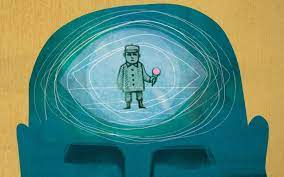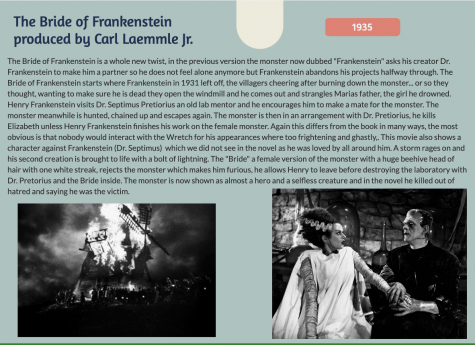Siddhartha’s Cycle of Life
Siddhartha by Hermann Hesse is about a Brahmin named Siddhartha “Who was intelligent and thirsty for knowledge”(Hesse 4). Siddhartha goes on a journey to kill his “Self”, the desires he has. In the process, he leaves his father to set out on a journey. He meets with the Buddha and leaves to continue his journey. He becomes a rich man and then abandons all of his wealth and his partner Kamala, leaving her with a child. He learns from the river and Vasudeva, eventually becoming a ferryman himself. Siddhartha meets his son and tries to bond with him, but is unsuccessful. His son leaves shortly after, the same way that Siddhartha left his dad. In the book Siddhartha, Hermann Hesse uses foreshadowing, commas, as well as metaphors to support the theme that cycles are everywhere in life, and by changing our actions we can learn and grow.
Hesse uses commas as a way to guide the reader’s thoughts in a circular path. After Kamala died, Siddhartha “stood there for a long time, thinking, seeing pictures, seeing the story of his life”(126). Hesse uses commas as a way to direct the reader’s thoughts back to the earlier sections of the book. He plays with how commas pause the text, to give the reader time to think about previous events and also what may happen in the future. He takes this to an extreme by constantly and consistently using commas. This is especially prevalent in this quote because Siddhartha is looking back at the path he has taken so far. Hesse sets up the reader to be in the same position as Siddhartha allowing the reader to look back on his path creating a cycle of thoughts. At the very beginning of the book, Siddhartha had thought “But where were the Brahmins, the priests, the wise men…”(7) His use of commas allows him to switch the idea he is trying to convey. The commas help keep the reader grounded and allow an easier understanding of what is going on. Hesse switches the wording of the description to give the reader a more in-depth view of who and what the Brahmins are. His use of commas gives the reader time to contemplate what is going on, each new description adds another level of depth, sharpening the description. This style of placing commas allows the reader to think about what the author is trying to say more sincerely. Hesse’s description of the Brahmins makes cycles prominent within the text. From “the Brahmins, the priests, the wise men,” the description of the Brahmins follow a circular path. Hesse shows that in his writing there are cycles that he follows to convey the message that one can learn and grow from cycles.
Hesse’s frequent use of foreshadowing perpetuates the theme of cycles being everywhere in life and also within this text. Before Siddhartha meets the Buddha, he “had heard that this alleged Buddha had formerly been an ascetic and had lived in the woods, had then turned to high living and the pleasures of the world, and he held no brief for this Gotama”(21). Hesse interlocks Siddhartha’s path with Gotama’s. Gotama dies of old age once Siddhartha has reached the end of his spiral. Gotama is used to show what Siddhartha will be like once he finally becomes enlightened. Gotama is described as “a holy man to his fingertips”(28). Govinda, after meeting with Siddhartha, had thought, “This is a holy man!”(148). Hesse portrays Gotama as another version of Siddhartha. Siddhartha is only able to understand his cycle after he experiences it firsthand. Hesse foreshadows a path using Gotama to show the result of the book and the conclusion of a cycle. Another example of foreshadowing later is in the book. Shortly after Siddhartha’s son runs away, he realizes his son is following the same path he did. He “had compelled his father to let him go and join the ascetics, how he had taken leave of him, how he had gone and never returned”(132). The meeting with his son is Hesse’s way of having Siddhartha meet and see his past self. His “face resembled that of another person…It resembled the face of his father, the Brahmin”(131). Hesse overlaps Siddhartha with his father in a literal sense. Their faces looking similar is a means to show how Siddhartha’s son repeated Siddhartha’s actions. Siddhartha leaves his father as a way to get what he wants and his son ends up doing the same thing to him. He is only able to realize that he caused this cycle once his son leaves him. Hesse foreshadows Siddhartha’s son leaving by having Siddhartha leave his father. Siddhartha’s son is a copy of Siddhartha when he was living a life of luxury. Hesse uses foreshadowing to show that the plot of the book is one big cycle, the end is shown at the beginning and we are taken back by Hesse. He also uses it to introduce the start of cycles throughout the later parts of the book, such as the river, representing the water cycle, or the potter’s wheel, representing Siddhartha’s path. These cycles teach us that to move forward we need to look back on our past mistakes.
Siddhartha’s journey is a slow-moving cycle in which he makes repeated mistakes and slowly understands what he needs to do to fix them. Hesse’s representation of Siddhartha’s journey using metaphors allows the theme of cycles to become more prevalent. One of Hesse’s first uses of metaphors is when Siddhartha tastes riches and lust. “Just as a potter’s wheel, once it has been set in motion, will keep on turning for a long time and only slowly lose its vigour and come to a stop, thus Siddhartha’s soul had kept on turning the wheel of asceticism…”(76). The potter’s wheel is a metaphor for his path, it starts to lose its vigor when he breaks free of one of his cycles. He finally gives up on his wealth allowing him to move further through the cycle of life. Hesse uses the potter’s wheel specifically to show how Siddhartha’s cycle slows near its completion. Another metaphor is when Siddhartha meets the ferryman, Vasudeva for the first time and does not have enough money to pay, “Certainly. I have learned from the river too; everything comes back. You too, Samana, will come back”(49). Hesse is saying that water is a cycle, all of the water that leaves ends up coming back. The river water evaporates into the rain, the rain comes back down and fills the rivers, and the cycle repeats. Vasudeva is saying that Siddhartha will return to this stage of his journey and will even return to this specific spot. The river represents loops and portrays the theme of cycles throughout the book. Hesse uses the river specifically because it is one of the most prominent visible cycles in nature. His use of nature is a way for the reader to understand what cycles will look like in the real world. Hesse is also able to describe the cycles of the river differently, soon after Siddhartha began to settle down with Vasudeva, “‘That is it,’ said Siddhartha, ‘ and when I learned that, I reviewed my life and it was also a river, and Siddhartha the boy, Siddhartha the mature man, and Siddhartha the old man, were only separated through shadows, not through reality’”(107). The river in Siddhartha is a representation of time. Hesse plays with this and uses the river to show how time repeats itself. Within this quote, Siddhartha is saying that time isn’t passing, it is happening in the same moment. Hesse’s use of the river, as well as the potter’s wheel, shows how the theme of cycles is represented in the real world. This teaches us that even if we fail once we can keep trying until we can succeed.
The theme that cycles are everywhere in life and if we notice them we can learn and grow from them is supported by Hesse’s use of the river, commas, and also his use of foreshadowing. The water cycle portrays a real life cycle that we can see. Hesse also uses the potter’s wheel, a physical version of Siddhartha’s path. He uses commas to guide his writing and the reader’s thoughts in a circular path. He also uses commas to describe ideas in a more influential way. Hesse foreshadows later plot points, creating a literary cycle throughout the book. In conclusion, Hermann Hesse’s Siddhartha has the overarching theme of cycles being everywhere in life to show that we can see and grow from cycles as people.




